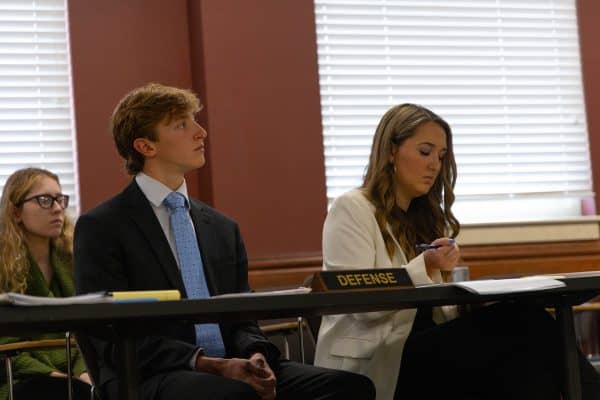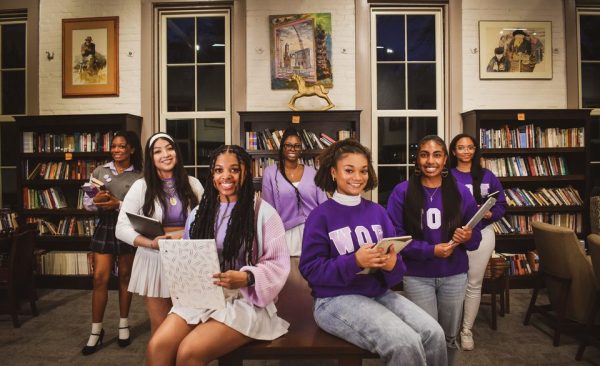Film Column: ‘A Star Is Born’ just keeps getting better
October 12, 2018
It’s clear from the outset that Bradley Cooper’s, “A Star Is Born” is going to differentiate itself from its predecessors. “A Star Is Born,” the 1937 story of a fading alcoholic luminary eclipsed by the young starlet whom he loves, has been the source material for three remakes. This isn’t the first time big names have been attached to the story, either—Lady Gaga’s role in the 2018 version has been played by Judy Garland and Barbra Streisand, and even the screenplays have had esteemed writers attached to them throughout the years.
In this version, Cooper chooses to stick with the backdrop of the music industry, a choice made in the 1976 version and a change from the original film’s focus on Hollywood’s film culture. As a result, 2018’s reincarnation of the film is more similar to 1976’s than any of the others.
But the difference between Cooper’s Jackson Maine and Kris Kristofferson’s John Norman Howard is the way that the screenwriters and directors chose to represent alcoholism. John Norman, the male love interest and failing superstar in the 1976 version, is self-destructive and jealous, alternating between petty and absolutely apathetic. Jackson, on the other hand, is someone with the disease of alcoholism who struggles with substance abuse and has a real desire to recover.
The distinction between their characters is apparent during a parallel scene in the beginning of the film. In both versions, the female protagonist—be she Lady Gaga’s Ally or Barbra Streisand’s Esther—arrives to see the male rocker perform; in both versions, the two lose each other in the crowd on the way out of the venue. In the 1976 version, this scene is jarring and mildly terrifying. In the final shot, Esther is left abandoned in the middle of nowhere with no way to get home. She shouts John Norman’s name to no avail, and soon everyone is gone.
In 2018’s version, things seem to be heading in that same direction. Ally loses Jackson’s hand in a dark backstage area. As the crowd surges between them, Ally calls out Jackson’s name frantically. A viewer who has seen the Streisand-Kristofferson iteration is already dreadfully resigned to what will happen next. Yet, in what feels like a rapturous miracle, Jackson turns around and reaches out for her, and they board his tour bus safely.
It’s this scene among many others—the ugly, tumultuous fight in the house; the sudden wedding; the final moments of their relationship—that turn the tables on characterizing alcoholism.
The supporting performances in the film are not to go unmentioned. Sam Elliott and Andrew Dice Clay serve as father figures to our protagonists. Elliott in particular serves as an anchor and an ally for Jackson, whose substance abuse can be traced back to his own father’s alcoholism. In his role, Elliott is convincingly and heartbreakingly stoic, angry, and mournful when in conversation with Cooper’s Jackson.
Gaga, for her part in the production, shines just as brightly as the stars who came before her. We first see Gaga’s Ally sing as she leaves work, her voice ricocheting around the alley where she drops off a trash bag. The opening title slowly fades up over this shot, Ally lifting her arms triumphantly as she reaches the main road. It’s the same alley she will escape in a black Escalade when she finally relents to go see Jackson perform, and to cinematographer Matthew Libatique’s credit, the narrow street seems to lead us directly toward her destiny.
Gaga has plenty of opportunities to show off her newfound acting skills, but she especially soars when given the chance to sing. The film’s trailer has teased the moment Ally first sings in front of a large audience, but it remains impactful in the theatre. Coaxed onstage by Jackson, she sings the verse nervously before pulling his microphone toward her and unleashing a wail that induces chill bumps in the audience. Ally’s final musical number in the film stuns; Gaga, a wildly successful arena performer, emotes beautifully through her music while Cooper’s direction leads the audience to a tearful finale.











